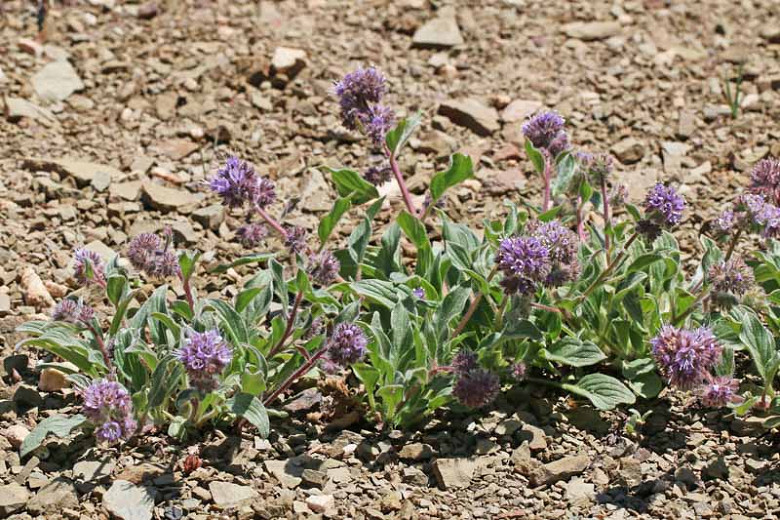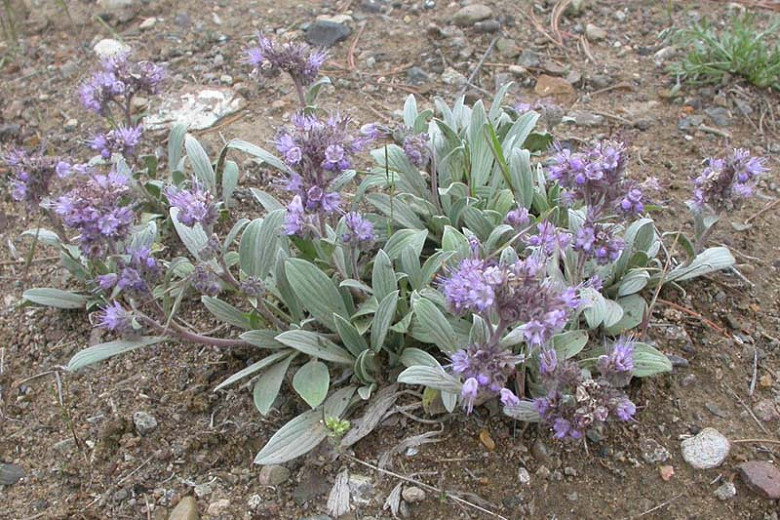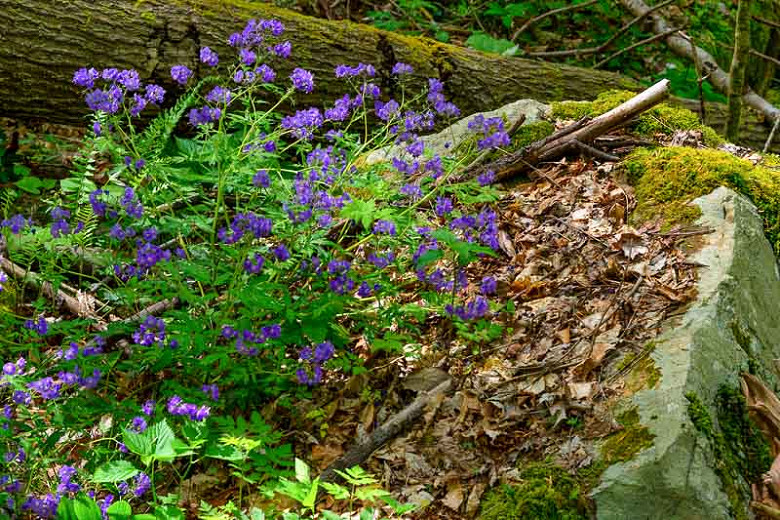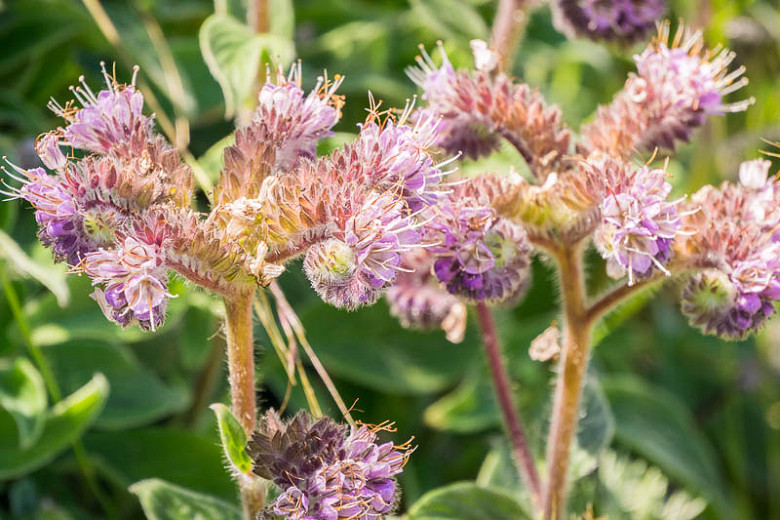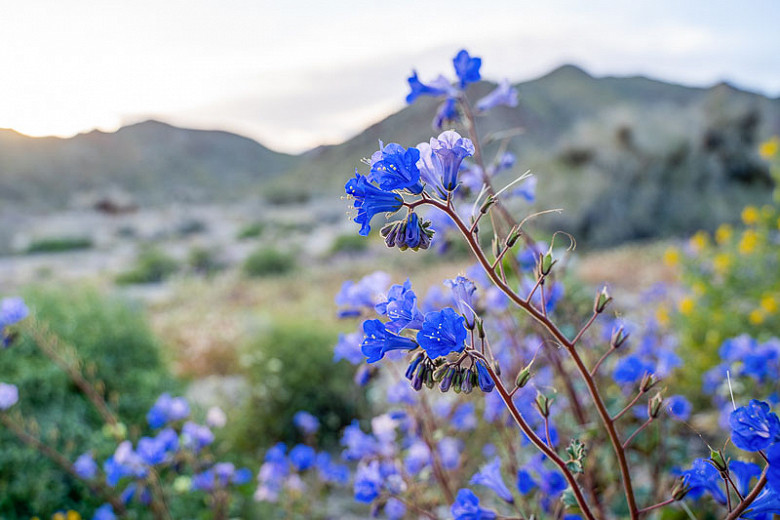Phacelia hastata (Silverleaf Phacelia)
Phacelia hastata (Silverleaf Phacelia) is a tap-rooted perennial boasting dense, tightly coiled clusters of purple flowers with long, conspicuous stamens. Resembling the tail of a scorpion, they provide pollen and nectar for native bees and other beneficial insects during an extended blooming period. Blooming from late spring to mid-summer, they emerge from a lush rosette of elliptical leaves that are covered with fine, short, silvery hairs, giving the plant a silky, silvery look. Silverleaf Phacelia spreads slowly via seed dispersal, without becoming weedy or invasive. The attractive blossoms, long blooming period, and drought tolerance of Silverleaf Phacelia make it an excellent wildflower species to use in water-wise gardens, low maintenance, and naturalistic landscapes. A great plant for a dry rockery.
- Grow up to 12-24 in. tall (30-60 cm).
- Thrives in part sun in sandy or gravelly, dry, well-drained soils. Drought tolerant once established.
- No serious pest or disease issues.
- An excellent choice for rock gardens, wildlife gardens, or prairie gardens.
- Silverleaf Phacelia flowers, stems, and seed pods are covered in numerous hairs, each containing oil that may cause rashes, and itching comparable to the effects of poison oak or poison ivy.
- Native to western North America.
Requirements
| Plant Type | Perennials |
|---|---|
| Plant Family | Phacelia |
| Exposure | Partial Sun |
| Season of Interest | Spring (Late)Summer (Early,Mid) |
| Height | 1' – 2' (30cm – 60cm) |
| Water Needs | Low |
| Maintenance | Low |
| Soil Type | Loam, Sand |
| Soil pH | Acid, Alkaline, Neutral |
| Soil Drainage | Well-Drained |
| Characteristics | Showy |
| Native Plants | United States, California, Midwest, Nebraska, North Dakota, South Dakota, Pacific Northwest, Idaho, Oregon, Washington, Rocky Mountains, Colorado, Montana, Utah, Wyoming, Southwest, Nevada |
| Tolerance | Drought, Dry Soil, Rocky Soil |
| Attracts | Bees |
| Garden Uses | Beds and Borders |
| Garden Styles | Gravel and Rock Garden, Informal and Cottage, Prairie and Meadow |
